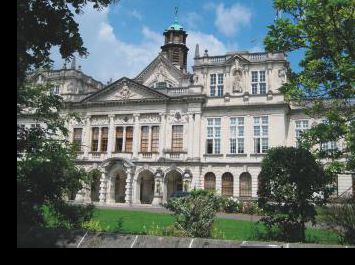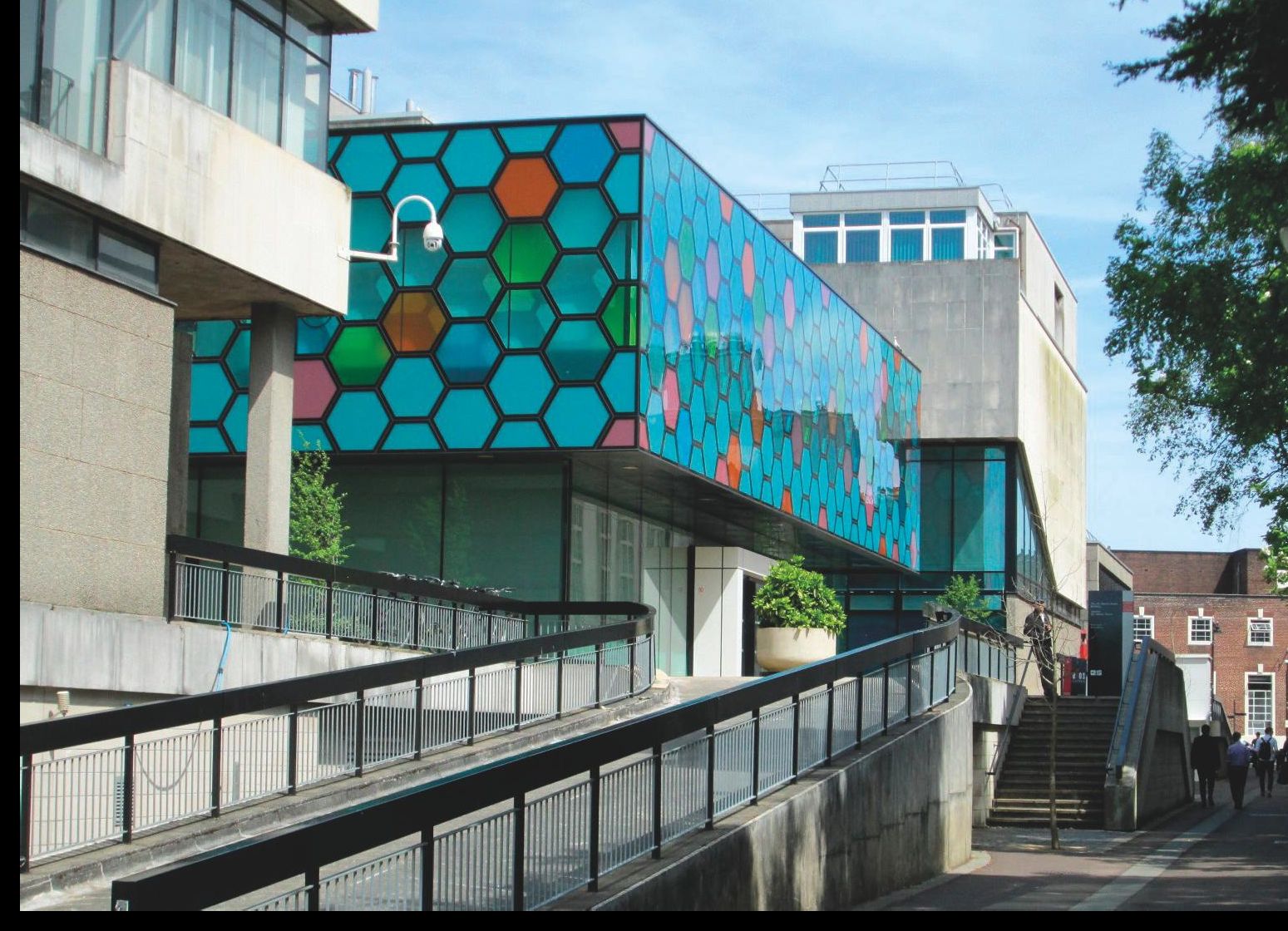
Physiology News Magazine
Physiology 2015: welcome to Cardiff / croeso i Caerdydd!
Events
Physiology 2015: welcome to Cardiff / croeso i Caerdydd!
Events
Sarah Hall, Paul Kemp & Frank Sengpiel
School of Biosciences, Cardiff University, UK
https://doi.org/10.36866/pn.99.14
6–8 July 2015, Motorpoint Arena, Cardiff, UK

We were surprised, and then delighted, to realise that the main meeting of the Society is to take place here in Cardiff this July. The last time the Society met in Cardiff was in 1999, when Vincenzo Crunelli was head of the Physiology Unit. Back then, the meeting was a very hands-on affair, with the Cardiff physiologists acting as hosts and organisers. Local members were involved in all aspects of the meeting, including arranging venues for talks and dinners, inviting speakers, chairing sessions and even negotiating terms with the B&Bs around the city. This time, the Society staff in Hodgkin Huxley House has managed every aspect so smoothly that all we Cardiff physiologists are required to do is to turn up with everyone else!
Cardiff claims to have more green space per person than any other UK city, more hours of sunlight than Milan and more castles than any other city in the world (that’s four, for the trivia aficionados). It’s not surprising, then, that National Geographic magazine recently selected Cardiff as one of the 10 best places to visit in the world! Although you don’t need to speak Welsh to get around in Cardiff, you might be intrigued to learn that the Welsh word for ‘physiology’ is ‘ffisioleg’. Visiting physiologists may also find it useful to know that the local beer is called Brains (you could meet a man with several Brains!) and that the type of seaweed used to make the local delicacy laverbread is unusual because its fronds are only one cell thick.
Cardiff’s roll call of distinguished physiologists includes John Berry Haycroft (Professor of Physiology from 1893-1920), whose obituary in Nature in 1923 stated that he had ‘devoted his life to physiology’, and Vernon Pickles (Head of Department from 1966-1981), who made significant discoveries relating to the role of prostaglandins in uterine function. There are currently around 30 members of the Society scattered across Cardiff University, predominantly in the Schools of Biosciences, Medicine and Pharmacy. The School of Biosciences is housed in the Sir Martin Evans Building, named after the first Head of School, who won the Nobel Prize in Physiology or Medicine in 2007 (together with Mario Capecchi and Oliver Smithies) for ‘discoveries of principles for introducing specific gene modifications in mice by the use of embryonic stem cells’. The theme of stem cells in Cardiff has been expanded over the last decade, to include significant strengths in pluripotent stem cell-based modelling and potential treatment of neurodegenerative diseases, particularly Huntington’s and Parkinson’s Diseases, as part of an integrative approach across the School and the Neuroscience & Mental Health Research Institute. MRC Prof Ole Petersen, who has recently stepped down as Director of the School, pioneered studies of calcium signalling in epithelial cells and is a former President of The Physiological Society. His team investigates physiological and pathophysiological signalling mechanisms in the pancreas. Daniela Riccardi, Paul Kemp and their group have been in the news recently, having identified a potential role for the calcium-sensing receptor (CaSR) in asthma. Their work demonstrates the effectiveness of calcilytic drugs in manipulating CaSR to reverse all symptoms associated with the condition. The calcium focus extends to the Institute of Molecular and Experimental Medicine, where physiology-related research encompasses molecular investigation of the structure and function of the ryanodine receptor, and events during fertilisation and early embryo development. The prestigious ARUK Biomechanics and Bioengineering Centre is leading interdisciplinary studies of joint biomechanics and disease, and Cardiff University scientists have also recently developed a novel anti-cancer stem cell agent capable of targeting aggressive tumour-forming cells common to breast, pancreas, colon and prostate cancers. Researchers in Cardiff are employing an array of molecular, electrophysiological, immunohistochemical and imaging techniques to understand physiological and pathophysiological processes.

Cardiff University has also had a strong presence in cellular and integrative neuroscience for many years. Graham Brown, who made significant contributions to understanding the neural control of locomotion, was head of the Institute of Physiology in Cardiff from 1920 to 1947. Under Brown’s chairmanship, The Society met for the first time in Wales and, afterwards, the Great Western Railway Company provided a special coach to take the delegates back to London. Delegates in 2015 should be warned not to expect such treatment! Current neuroscience research foci in the School of Biosciences include developmental plasticity of the visual and somatosensory systems, and the thalamocortical circuitry underlying sleep-wake cycles and epilepsy. The methods employed range from classical slice recordings and in vivo extracellular recordings to map receptive field properties to recordings with implanted tetrodes in conscious, behaving animals, and from optical imaging of intrinsic signals of cortical areas to two-photon calcium imaging of the activity of individual neurons. Cardiff hosted a themed meeting on sensory systems in 2009 and Frank Sengpiel was the Neuroscience theme lead from 2010 to 2014. Since 2010, the Neuroscience & Mental Health Research Institute has provided a new focus on neuropsychiatric, neurodevelopmental and neurodegenerative conditions; here new discoveries of genetic causes of mental illness are translated, in animal models, into greater understanding and diagnosis of these conditions. This work also encompasses a wide range of cellular and integrative neuroscience approaches.
In addition to its research activities, the School of Biosciences is home to over 1,300 undergraduate students. We offer a range of degrees across the spectrum of biosciences, from molecular biology to ecology; although only some of these students are enrolled on standard Physiology or Neuroscience degree programmes, physiology is a core component of the first year of all our degrees. In addition, we contribute to teaching medical and dental students, as well as medical engineers. Post-graduate provision is an important aspect of the School’s purpose. There are currently around 150 PhD students, and another 15 MRes students, enrolled for post-graduate degrees. A small team of PhD students and post-doctoral researchers have worked together to produce a programme for the Early Career Physiologists symposium in July which builds on Cardiff’s research profile to explore the diverse ways cellular signalling is involved in health and disease.
The School of Biosciences has made a significant commitment to the development of innovation and engagement activities to enhance the traditional academic pursuits of learning, teaching and basic research. Annual events for schools include the ‘Learn About Life’ days for local primary school pupils, the ‘Wales Brain Bee’ for secondary school pupils and sixth-form workshops aimed at widening access to health-related sciences. Undergraduate students are encouraged to participate in such outreach sessions and can even undertake final year research projects based on the design and development of engagement activities or tools.
Since the Cardiff meeting has a packed programme, not to mention the other competing tourist attractions, you may not find time to venture all the way across town from the Motorpoint Arena to the University, but we can provide a map and directions if you want to visit. It is only a 15-20 minute walk, and the postcode is CF10 3AX. In any event, we look forward to welcoming you to the Welsh capital in July – Croeso ffisiolegwyr!
